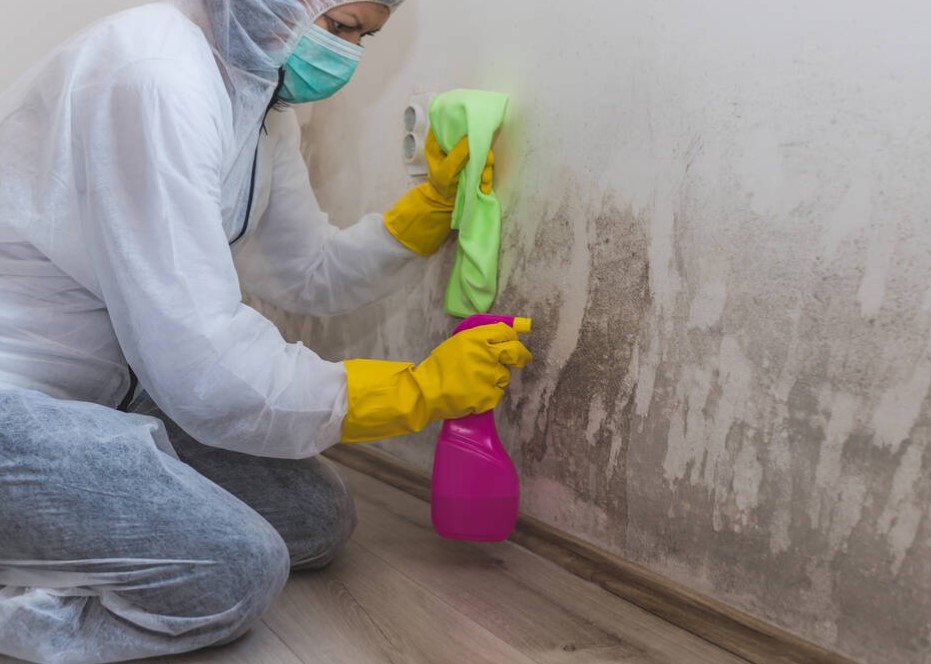Mould growth on clothes can be a frustrating and unappealing issue. Not only does it create unpleasant odours, but it can also cause health problems if left untreated. Fortunately, there are effective ways to mould removal Brisbane from clothes and prevent its recurrence. In this guide, we will walk you through the step-by-step process of tackling this issue and restoring your clothes to their pristine condition.
Key Takeaways:
- Mould thrives in damp conditions and can pose health risks.
- Gather necessary supplies before starting mould removal.
- Follow a step-by-step process: identify fabric, gather supplies, pre-treat, and clean.
- Utilise natural remedies like white vinegar, baking soda, and lemon juice.
- Prevent mould by proper storage, regular cleaning, and using dehumidifiers.
- Deal with stubborn stains using hydrogen peroxide or commercial removers.
- Seek professional help for extensive mould issues or sentimental clothing.
- Adjust cleaning methods for specific fabrics: cotton, linen, wool, silk, synthetics.
- Patience and proper steps can remove mould and prevent future growth.

Understanding mould on Clothes
Mould is a type of fungus that thrives in damp and humid conditions. When your clothes are exposed to moisture and are not properly dried, mould spores can find a suitable environment to grow and spread. This not only damages the fabric but also poses health risks, as mould can trigger allergies and respiratory issues.
Preparation
Before you start the mould removal process, gather all the necessary supplies. You’ll need a soft-bristle brush, mild detergent, white vinegar, baking soda, hydrogen peroxide, lemon juice, and access to sunlight. Ensure that the affected clothing items are separated from the rest of your wardrobe to prevent the spread of mould.
Removing mould from Clothes
Identifying Fabric Compatibility
Different fabrics require different cleaning methods. Check the care label on your clothing to determine the appropriate approach. Delicate fabrics might need special attention, so it’s crucial to know what you’re dealing with.
Basic Supplies You’ll Need
Collect a soft-bristle brush, a basin of water, and mild detergent. These items will help you gently scrub away the mould without damaging the fabric.
Pre-Treatment Steps
Begin by brushing off any loose mould spores outdoors to prevent them from spreading indoors. Then, create a mixture of water and mild detergent, and gently scrub the affected areas using the soft-bristle brush.
Main Cleaning Process
Fill a basin with water and add mild detergent. Submerge the clothing, gently agitate the water, and let it soak for about 15 minutes. After soaking, use the brush to scrub the mould-affected areas once again. Rinse thoroughly.
Natural Remedies for mould Removal
White Vinegar Solution
White vinegar is a powerful natural cleaner and fungicide. Mix equal parts of water and white vinegar in a spray bottle. Spray the solution on the mouldy areas and let it sit for 15 minutes. Scrub and rinse the clothing afterward.
Baking Soda Paste
Create a paste using baking soda and water. Apply the paste to the mouldy spots and allow it to dry. Once dry, scrub off the paste and rinse the clothing.
Lemon Juice and Sunlight
Lemon juice has natural bleaching properties. Apply lemon juice to the mouldy areas and place the clothing in direct sunlight for a few hours. The combination of lemon juice and sunlight can effectively eliminate mould stains.
Preventing Future mould Growth
Proper Storage
Store your clothes in a dry and well-ventilated area. Avoid cramming clothes together, as it restricts air circulation and promotes mould growth.
Regular Cleaning and Inspection
Frequently clean and inspect your clothes, even if they appear mould-free. This practice helps identify and address potential mould issues early on.
Dehumidification
Use dehumidifiers to maintain optimal humidity levels in your storage space, preventing conditions that encourage mould growth.
Dealing with Stubborn mould Stains
Hydrogen Peroxide Solution
For persistent mould stains, mix equal parts water and hydrogen peroxide. Test a small, hidden area of the fabric first, then apply the solution and gently blot the stain.
Commercial mould Removers
There are commercial mould removers available that are specifically designed for fabrics. Follow the instructions on the product for best results.
When to Seek Professional Help
If the mould infestation is extensive or the clothing holds sentimental value, it’s advisable to consult a professional cleaner who specialises in mould removal.
Tips for mould Removal from Specific Fabrics
Cotton and Linen
These fabrics can usually withstand the cleaning methods mentioned earlier. However, avoid using excessive force to prevent damage.
Wool and Silk
Delicate fabrics like wool and silk require extra care. Consider professional cleaning services to prevent fabric damage.
Synthetic Fabrics
Synthetic fabrics are generally more resistant to mould, but they can still be affected. Follow the same cleaning steps, adjusting the pressure and duration as needed.
Conclusion
Removing mould from clothes is a task that requires patience and the right approach. By following the steps outlined in this guide, you can effectively eliminate mould stains and prevent future growth. Remember to prioritise proper storage, regular cleaning, and maintaining optimal humidity levels to keep your clothes mould-free.
FAQs
Can I use bleach to remove mould from clothes?
Bleach can damage fabrics and may not always effectively remove mould stains. It’s safer to opt for alternative methods outlined in this guide.
Is sunlight alone sufficient to remove mould stains?
While sunlight helps, combining it with natural cleaning agents like lemon juice or vinegar enhances its effectiveness.
Can I still wear clothes that had mould stains?
After successful mould removal, your clothes should be safe to wear. However, if the mould has caused extensive damage, it’s best to discard them.
Are mould removers safe for all fabric types?
Mould removers designed for fabrics are generally safe, but it’s wise to test them on a small, inconspicuous area first.
What’s the best way to prevent mould on stored clothes?
Proper storage in a dry, well-ventilated space and regular inspection are key to preventing mould growth on clothes.